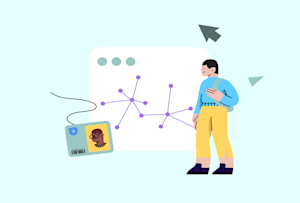Rare Disease Day: 7 Powerful Reasons to Raise Awareness and Show Support
Rare Disease Day is observed annually on the last day of February, with the purpose of raising awareness about rare diseases and improving access to treatment and medical representation for those who live with them. This day serves as a reminder that people living with rare diseases deserve visibility, understanding, and support. It also highlights the importance of collaboration among medical professionals, researchers, and communities in addressing the challenges posed by rare conditions.
What is Rare Disease Day?
Rare Disease Day is a global observance aimed at bringing attention to the plight of people living with rare diseases, as well as the need for more research, funding, and better medical care. The day was launched in 2008 by the European Organization for Rare Diseases (EURORDIS), and since then, it has spread worldwide, with participation from over 80 countries.
A rare disease, by definition, is a condition that affects a small percentage of the population, typically fewer than 1 in 2,000 people. Despite their rarity, the impact on individuals and their families can be profound, often involving lengthy diagnostic processes, limited treatment options, and social and emotional challenges. Rare Disease Day seeks to give voice to these individuals and unite people to advocate for improvements in healthcare and research.
History of Rare Disease Day
The idea for Rare Disease Day was conceived by EURORDIS in 2008 as a way to bring awareness to the challenges faced by those living with rare diseases. It was chosen to be held on the last day of February, a date that only occurs once every four years (in a leap year), which reflects the rarity of these conditions.
The first Rare Disease Day was celebrated in 2008, with events held in over 20 countries. Since then, the observance has grown exponentially, with more nations, organizations, and communities taking part in raising awareness for rare diseases.
The day is now a key occasion for discussing the challenges faced by people with rare diseases, as well as the advances in treatment options and research. It serves as a rallying point for governments, healthcare providers, patients, and advocates to come together and work towards solutions.
The Importance of Rare Diseases Awareness
Rare diseases may only affect a small portion of the population, but their societal impact is significant. Here are some reasons why Rare Disease Day matters:
- Empathy and Support: Rare Disease Day provides an opportunity for individuals with rare diseases to feel supported and understood. For many, the feeling of isolation can be overwhelming, but awareness efforts help to make them feel less alone in their journey.
- Advocacy for Research and Funding: Many rare diseases are poorly understood, and treatments are often unavailable or insufficient. Rare Disease Day advocates for increased funding for research to find effective treatments and cures for these conditions. The more awareness there is, the greater the demand for funding, which could lead to breakthroughs in medicine.
- Improved Access to Healthcare: Individuals with rare diseases often face significant challenges in accessing proper care. Rare Disease Day draws attention to the need for healthcare systems to better address the needs of these patients, from accurate diagnoses to specialized treatments and therapies.
- Reducing Stigma: Many rare diseases are invisible or misunderstood, and patients may face stigma or a lack of understanding from others. This day helps normalize conversations about rare diseases and reduces the social stigma that may surround these conditions.
- Promoting Solidarity: Rare Disease Day fosters a sense of global solidarity. The observance brings together individuals and groups from around the world to advocate for rare disease patients, reinforcing the message that everyone deserves proper medical care and social inclusion, regardless of how rare their condition may be.
- Education and Awareness: Rare Disease Day provides an opportunity for educational campaigns to inform the general public and healthcare professionals about the challenges of rare diseases. It also encourages the development of better diagnostic tools and treatments for conditions that are often overlooked.
- Inspiring Hope: Raising awareness about rare diseases gives individuals living with these conditions hope for better treatments and improved outcomes. It also empowers them to share their stories and contribute to the growing global movement for better care.
Impact of Rare Diseases in Daily Life
The impact of living with a rare disease can be profound, not only on the individual but also on their families, caregivers, and communities. Here are some ways rare diseases affect daily life:
- Diagnosis Delays: Due to the rarity of many conditions, individuals often face long diagnostic delays. Multiple tests and consultations are often needed before a proper diagnosis is made. This can lead to frustration, confusion, and a sense of helplessness.
- Emotional and Psychological Strain: Living with a rare disease can cause emotional strain on patients and their families. The uncertainty about the future, lack of support, and difficulty in accessing proper treatment can contribute to anxiety, depression, and other mental health challenges.
- Limited Treatment Options: Many rare diseases have few or no treatment options, leaving patients with little hope for managing their condition. This can result in prolonged suffering and reduced quality of life for those affected.
- Financial Burden: The high cost of specialized treatments, medications, and frequent medical visits can place a significant financial burden on individuals and families. For some, this can lead to financial hardship or the inability to access the care they need.
- Social Isolation: Rare diseases can lead to social isolation, as patients often feel disconnected from their peers due to their unique conditions. Family members may also struggle to find social support, making the journey more difficult.
- Educational and Employment Challenges: Children and adults with rare diseases may face challenges in education and employment due to physical limitations or the need for frequent medical care. This can affect their self-esteem and opportunities for personal and professional growth.
Observance and Celebration
Rare Disease Day is marked by various events and activities around the world. These include:
- Fundraising Campaigns: Charitable organizations and advocacy groups often organize fundraising events to support research for rare diseases.
- Public Awareness Campaigns: Social media campaigns, informational pamphlets, and documentaries help educate the public about rare diseases.
- Community Gatherings: Support groups and local organizations may hold meetings or special events to bring together individuals affected by rare diseases, providing them with a sense of community and solidarity.
Wishing for Rare Disease Awareness
On Rare Disease Day, individuals can share their support and wishes for those living with rare diseases by posting on social media or participating in local events. Some ideas for wishes:
- “On this Rare Disease Day, let’s stand together to raise awareness and support those living with rare conditions. Your voice matters!”
- “Wishing strength and hope to all those battling rare diseases. Together, we can make a difference!”
- “Let’s unite on Rare Disease Day to advocate for better treatments and more research for rare conditions.”
Conclusion
Rare Disease Day is a significant global event that raises awareness about the challenges faced by individuals with rare diseases. It’s a day to educate, advocate, and show solidarity with those who are often overlooked in the healthcare system. By increasing awareness, we can help foster a more inclusive world where people living with rare conditions have access to the resources, support, and treatment they need to thrive.










